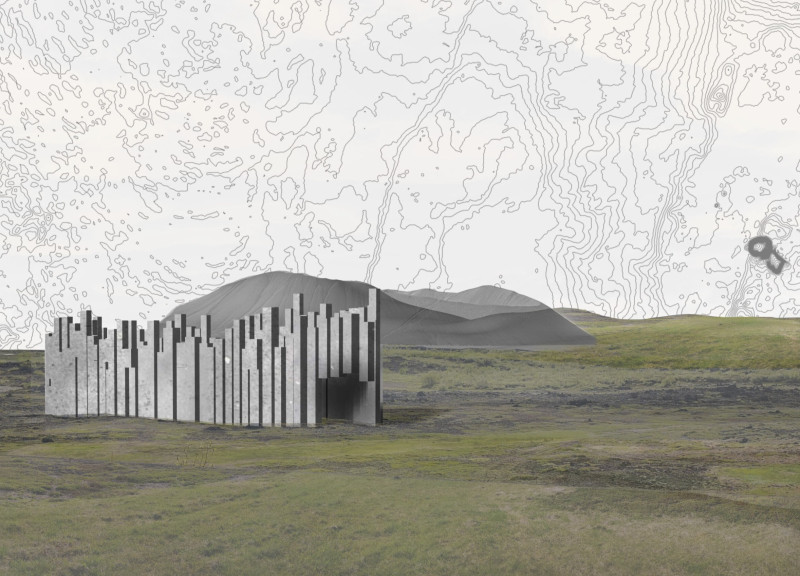5 key facts about this project
The Stone Fortress in Iceland serves as a cinematic pavilion designed to blend harmoniously with the surrounding landscape while encouraging community involvement around film. Inspired by the area’s geological characteristics, the design aims to evoke the feeling of walking through a cave, creating an immersive environment for visitors that connects with nature.
Design Concept and Structural Form
The pavilion uses basalt stone as its main material, a choice that reflects the unique geological identity of Iceland. This sturdy material contributes to the building’s stability while establishing a direct link to the landscape. The arrangement of basalt columns in a zig-zag layout creates an interesting shape that emphasizes height, giving the structure a strong presence in the natural surroundings.
Material Selection and Textural Contrast
Interior wood cladding complements the external basalt, adding a contrasting texture to the overall design. The combination of the rough stone and the smooth wood enhances the user experience as visitors interact with the space. This mix of materials not only provides visual interest but also engages people on a sensory level, making the environment more inviting.
Spatial Configuration and Natural Light
Large windows are strategically placed at the entrance, allowing natural light to fill the interior. This design choice enhances the atmosphere within the pavilion and establishes a connection to the outdoors. The arrangement of gathering areas, dining spaces, and cinema sections encourages social interaction and emphasizes the pavilion's role as a community hub.
Architectural Integration with Landscape
The overall form of the building reflects careful thought about the natural terrain. Curves derived from topographical study help the structure fit well into its environment. The varying heights of the columns create shifting light and shadow, highlighting the complexities found in nature. Attention to these details enhances the experience for visitors, making the space feel both connected to its surroundings and purposefully designed.






















































